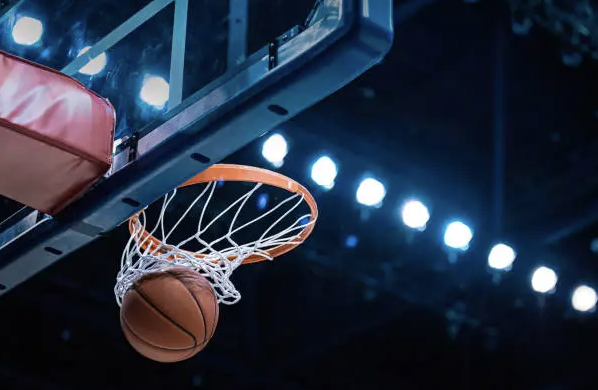Kari Nodine – In October, the Women’s National Basketball Association (“WNBA”) completed a historic season, culminating in the league’s most-viewed Finals game in twenty five years. The next day, the WNBA’s players’ union, the Women’s National Basketball Players Association (“WNBPA”), seized the spotlight to announce that its players are going to opt out of their current agreement with the WNBA to negotiate terms that better reflect their role in the league’s growth. According to WNBPA Vice President Kelsey Plum, players want a new agreement that ensures “an equitable stake in the business [they] helped build.”
The WNBPA signed its current agreement with the league in early 2020 before the WNBA’s significant rise in popularity and profitability over the past few seasons. Since then, the average viewership per game has increased from 205,000 viewers to 1.2 million viewers, and the league has signed a $2.2 billion broadcasting deal. Players, however, are barred from fully benefiting from the league’s financial growth due to the limited profit-sharing and strict salary caps. Under the current agreement, WNBA players receive only 9.3% of total league revenue (compared to the NBA, which gives players around 50%). The WNBA also enforces strict team salary caps, which restrict the sum total of a team’s players’ salaries. For the 2024 season, each team was capped at $1,463,200 to pay eleven to twelve players. In effect, this limited the league’s highest-paid players to $241,984 for 2024.
The current agreement remains in effect through October 31, 2027, but it allows players to “opt out” and terminate the agreement on October 31, 2025, provided the WNBPA gives notice by November 1, 2024. Having exercised this option, the WNBPA and the league now have nearly a year to renegotiate a new agreement. The WNBPA seeks not only to raise players’ pay but also to expand benefits and improve training and playing conditions. Their main objectives include replacing rigid pay structures with a more flexible equity-driven model; improving travel accommodations, team facilities, and safety measures; enhancing retirement benefits; and securing coverage for family planning expenses to ensure long-term security for players both on and off the court.
To achieve these goals, the WNBPA must now engage in a critical process in sports and labor law: negotiating a new collective bargaining agreement (CBA). A CBA is a labor contract between an employer and a union on behalf of employees that establishes terms and conditions of employment, including wages, working hours, workplace conditions, and benefits. It also defines the rights and responsibilities of both the union and the employer. CBAs have played a vital role in protecting workers’ interests for decades. The right to unionize and bargain collectively was codified in 1935 with the passage of the National Labor Relations Act (NLRA). The NLRA governs most private-sector workers, including professional athletes. It also established the National Labor Relations Board (NLRB) to protect workers’ rights under the Act. Among its many duties, the NLRB oversees CBA negotiations and has exclusive jurisdiction to resolve disputes when a union or employer is accused of bad-faith bargaining.
Throughout sports history, the NLRB has intervened on behalf of professional athletes’ unions to ensure that players are not disadvantaged by league management. Most famously, the NLRB played a pivotal role in resolving the 1994-95 Major League Baseball (MLB) strike in Silverman v. MLB Player Relations Committee, Inc., 880 F. Supp. 246 (S.D.N.Y. 1995). Following the expiration of the Major League Baseball Players Association’s (MLBPA) CBA in 1993, MLB team owners attempted to impose a new salary cap, free agency limit, salary arbitration ban, and other unfavorable terms upon players. When the MLBPA refused to acquiesce, the owners withheld players’ pensions and benefits, and the rest of the 1994 season- including the World Series- was canceled, marking the longest work stoppage in U.S. professional sports history.
Resolution finally came when the NLRB intervened on behalf of the MLBPA. The NLRP secured a preliminary injunction from U.S. Supreme Court Justice Sonia Sotomayor, then a young U.S. District Court judge in New York. Justice Sotomayor ordered that the “[o]wners have committed an unfair labor practice, and that an injunction is just and proper to avoid irreparable injury and to ensure that the Owners and Players continue bargaining, in good faith, until the resolution of their disputes.” As Justice Sotomayor emphasized, there is “[a]n important public interest in the process of collective bargaining,” and the NLRB must “ensure that the spirit and letter of federal labor law be scrupulously followed” to avoid “public confidence in the collective bargaining process [from being] permanently and severely undermined.
As Silverman demonstrates, good-faith bargaining under U.S. labor law is critical for professional athletes, ensuring players have a voice in negotiations with franchise owners, league commissioners, and agents who hold significant control over players. Unsurprisingly, players’ associations for nearly every professional sports league in the United States have a CBA in place.
As the WNBPA enters negotiations with the league over the next year, the outcome of the new CBA will shape the future of the WNBA and its players. These negotiations will not only determine players’ compensation and benefits under the new CBA but will also set a precedent for future agreements as players seek long-overdue recognition for their role in cementing the WNBA as a thriving, profitable, and growing league in the sports world. The WNBA’s Commissioner, Kathy Englebert, has stated that she “look[s] forward to working” with players at the “bargaining table,” but it remains unclear how much the league is willing to concede. Regardless, under the protections of the NLRA, players are entitled to a good-faith negotiation and the WNBPA will exercise this right to achieve its goals of “fully professionaliz[ing] the league, secur[ing] proper wages, improv[ing] working conditions, and lock[ing] in meaningful benefits.” As WNBPA president Nneka Ogwumike emphasizes the significance of these negotiations, “[t]his is a defining moment, not just for the WNBA, but for all of us who believe in progress.”


